Hairstyles for Men: Top Hairstyles and Haircuts from the 1930s to the 2000s
Hairstyles have always played a significant role in men’s fashion, evolving and changing with the times. Over the decades, hairstyles for men have come and gone, each representing the cultural and stylistic trends of their respective eras. In this article, we’ll take a journey through time and explore the top hairstyles and haircuts for men from the 1930s to the 2000s.
1930s: The Classic Side Part
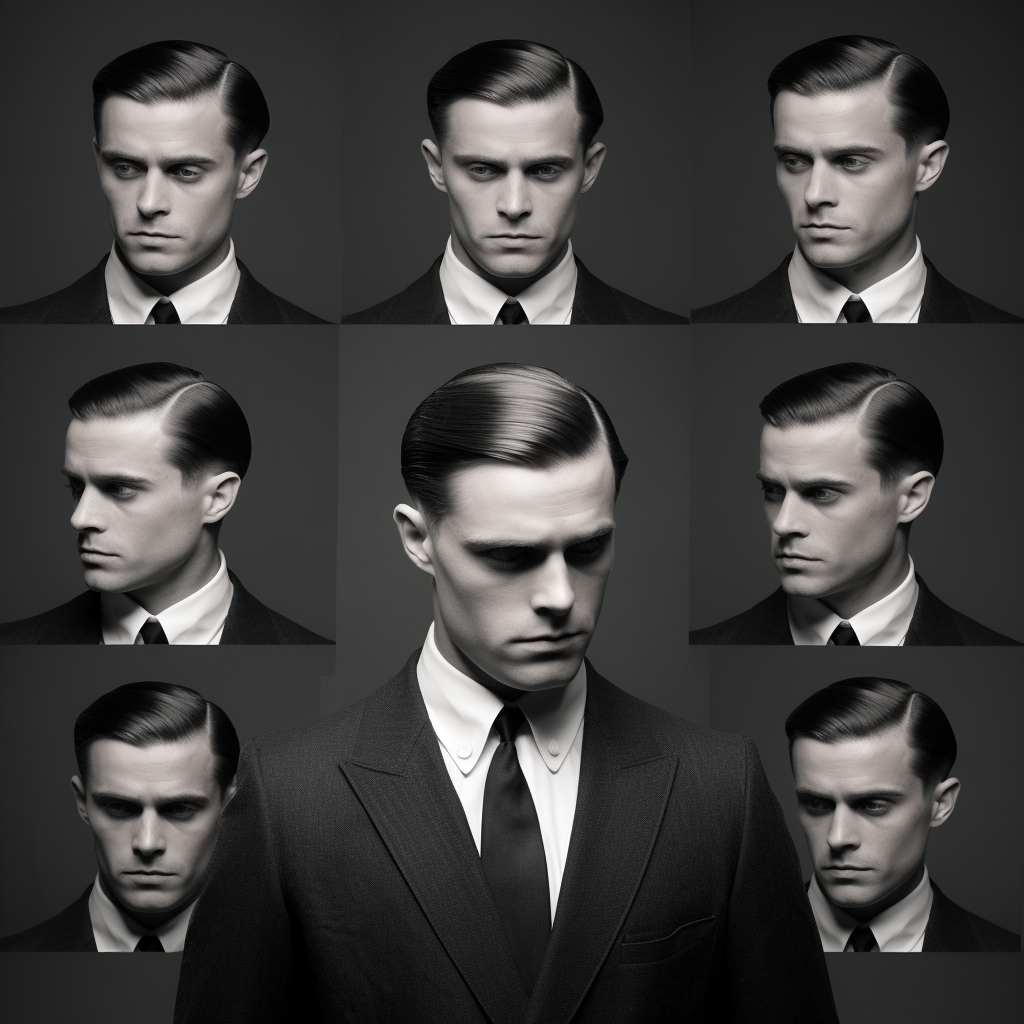
The 1930s were marked by the Great Depression and a desire for a more conservative aesthetic. Men’s hairstyles during this time were neat and sophisticated, with the classic side part being the dominant choice. This style involved combing the hair to one side and keeping it well-groomed and slicked down.
1940s: The Military Crew Cut
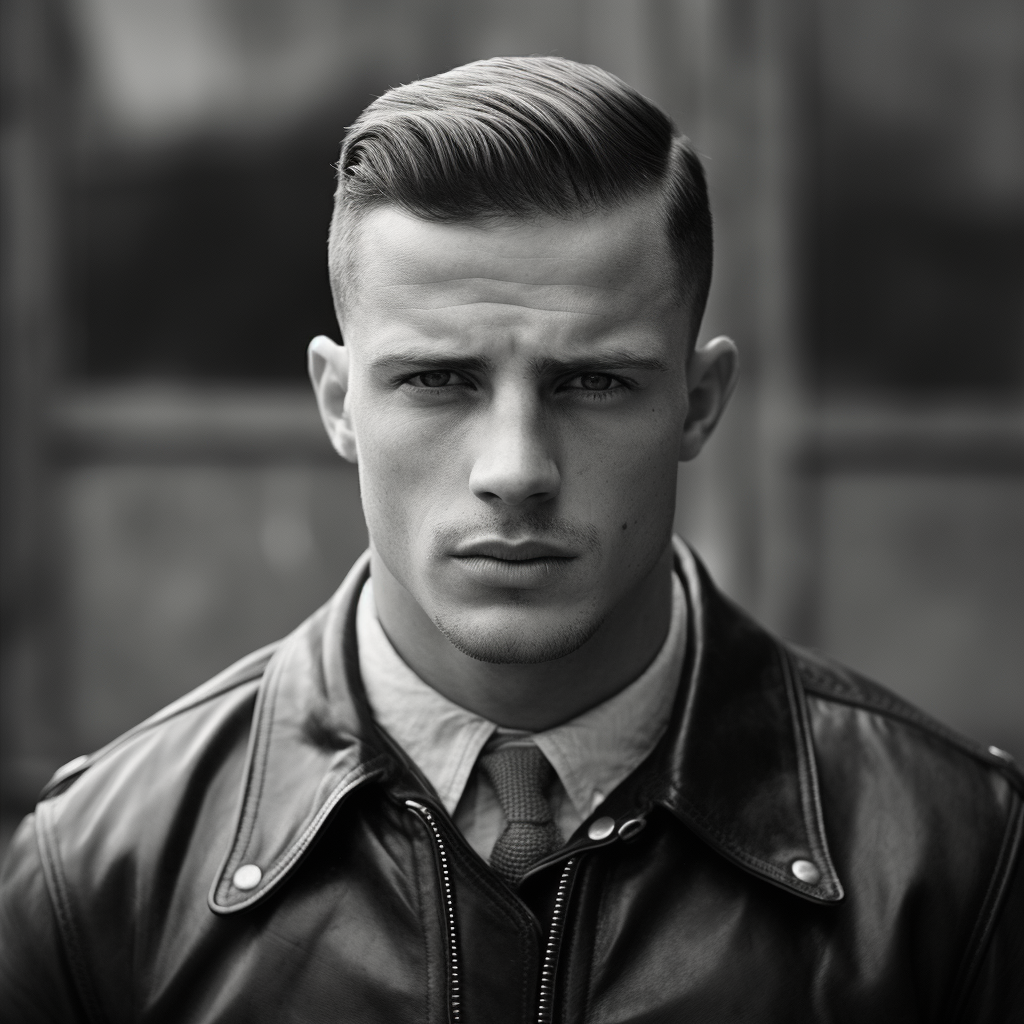
During World War II, military influence permeated men’s fashion, including their hairstyles. The crew cut gained immense popularity among men, inspired by military haircuts. This style featured short hair all around, often with a slightly longer length on top.
1950s: The Pompadour
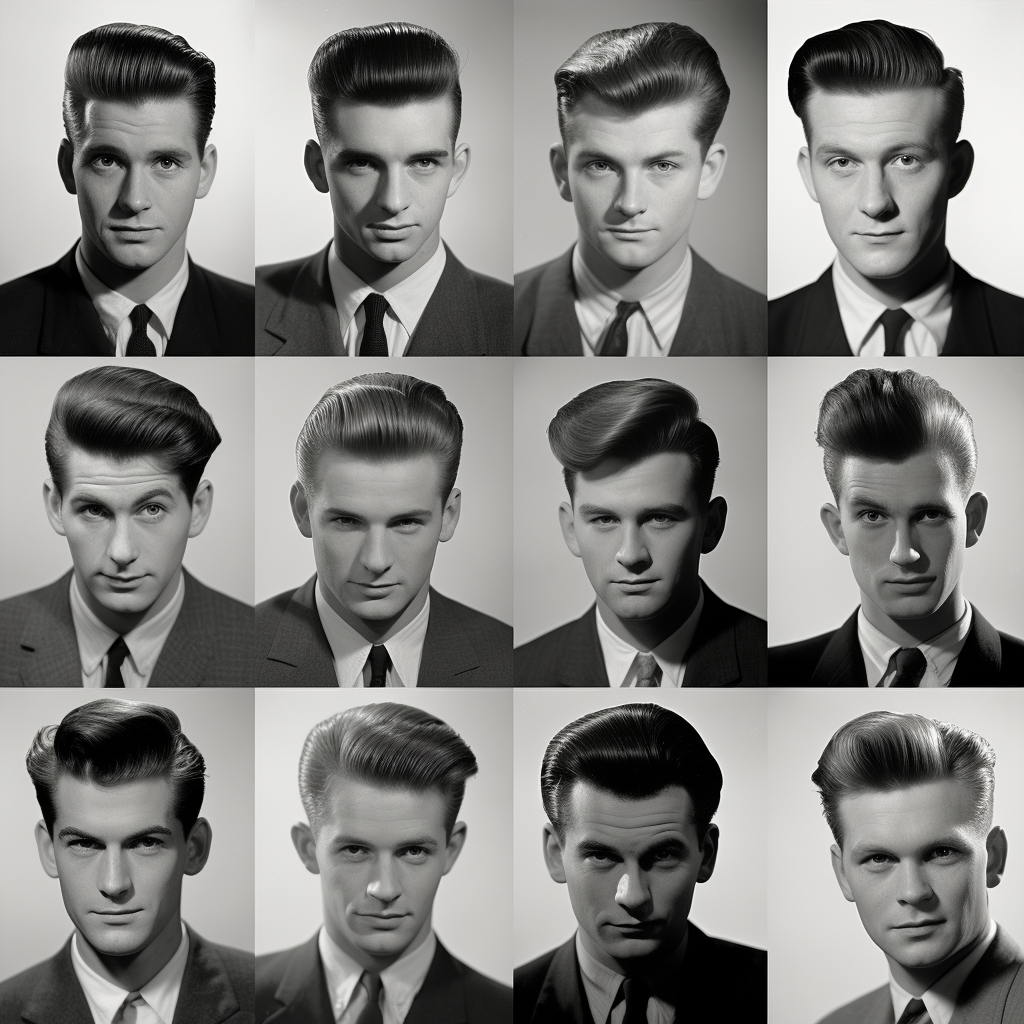
The 1950s introduced a rebellious spirit, and men began to experiment with bolder hairstyles. The pompadour, popularized by rock and roll icons like Elvis Presley, became an iconic style of the era. This voluminous look involved sweeping the hair back from the forehead while creating height at the front.
1960s: The Mod Cut
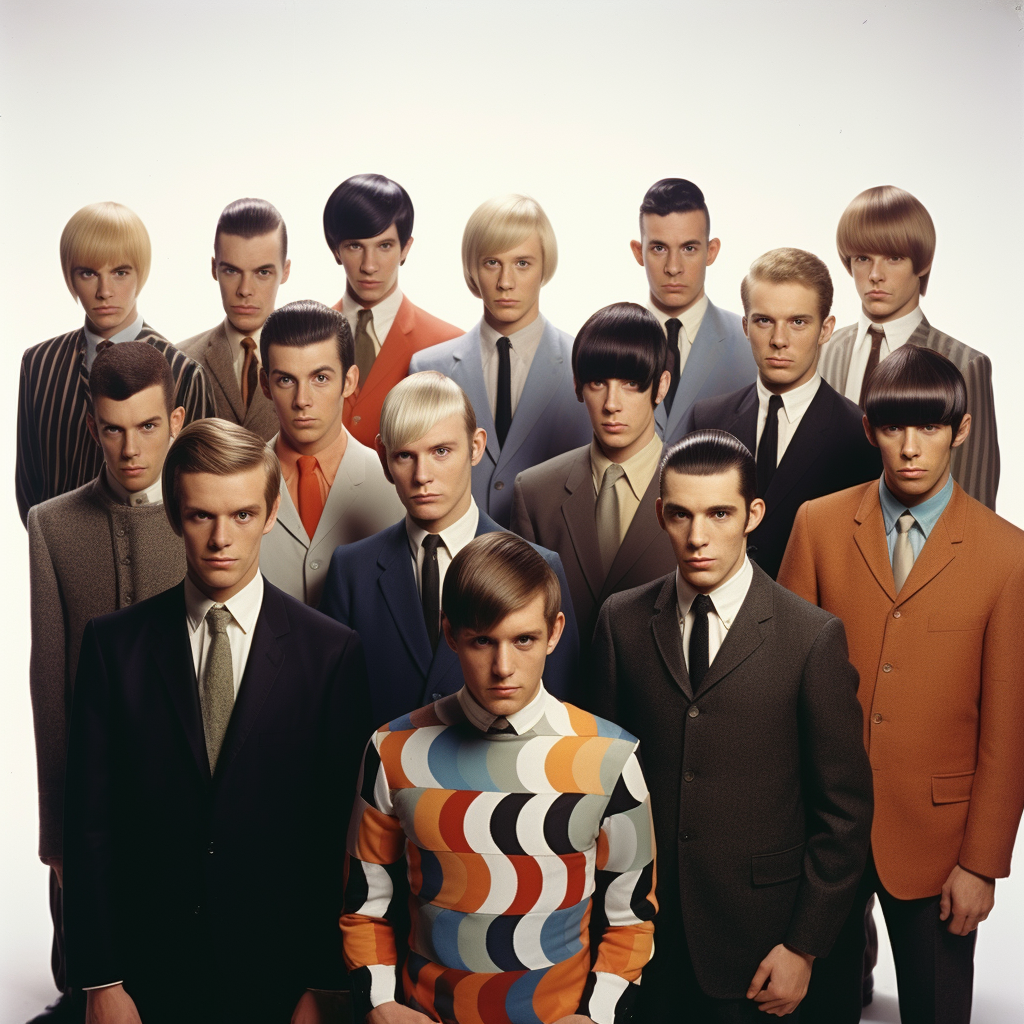
The 1960s witnessed a shift toward a more youthful and edgy aesthetic. The mod cut, synonymous with the British mod subculture, gained popularity. This style featured short, textured hair with clean lines, often accompanied by a fringe or bangs.
1970s: The Shag
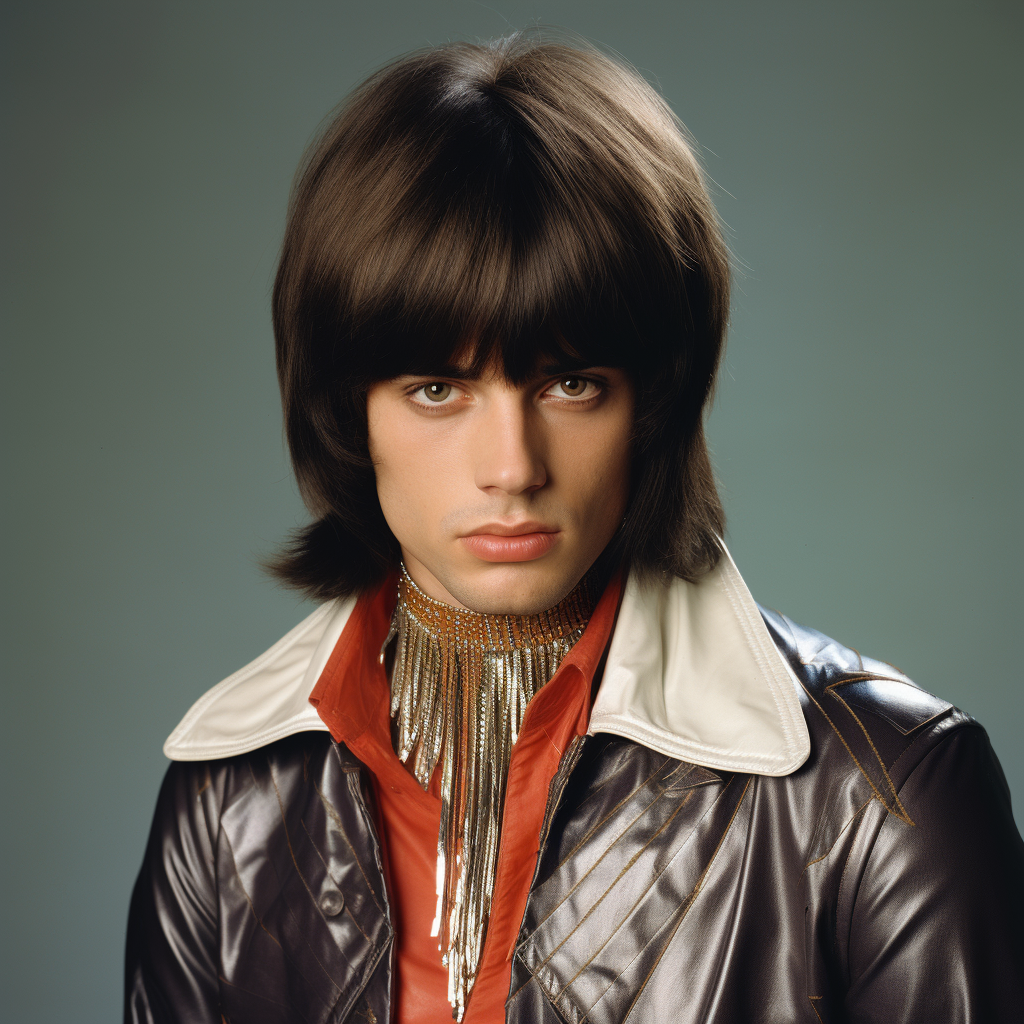
The 1970s embraced a more relaxed and free-spirited approach to hairstyling. The shag emerged as a popular choice, characterized by long, layered hair with natural waves or curls. This effortless style embodied the bohemian vibe of the era.
1980s: The Mullet
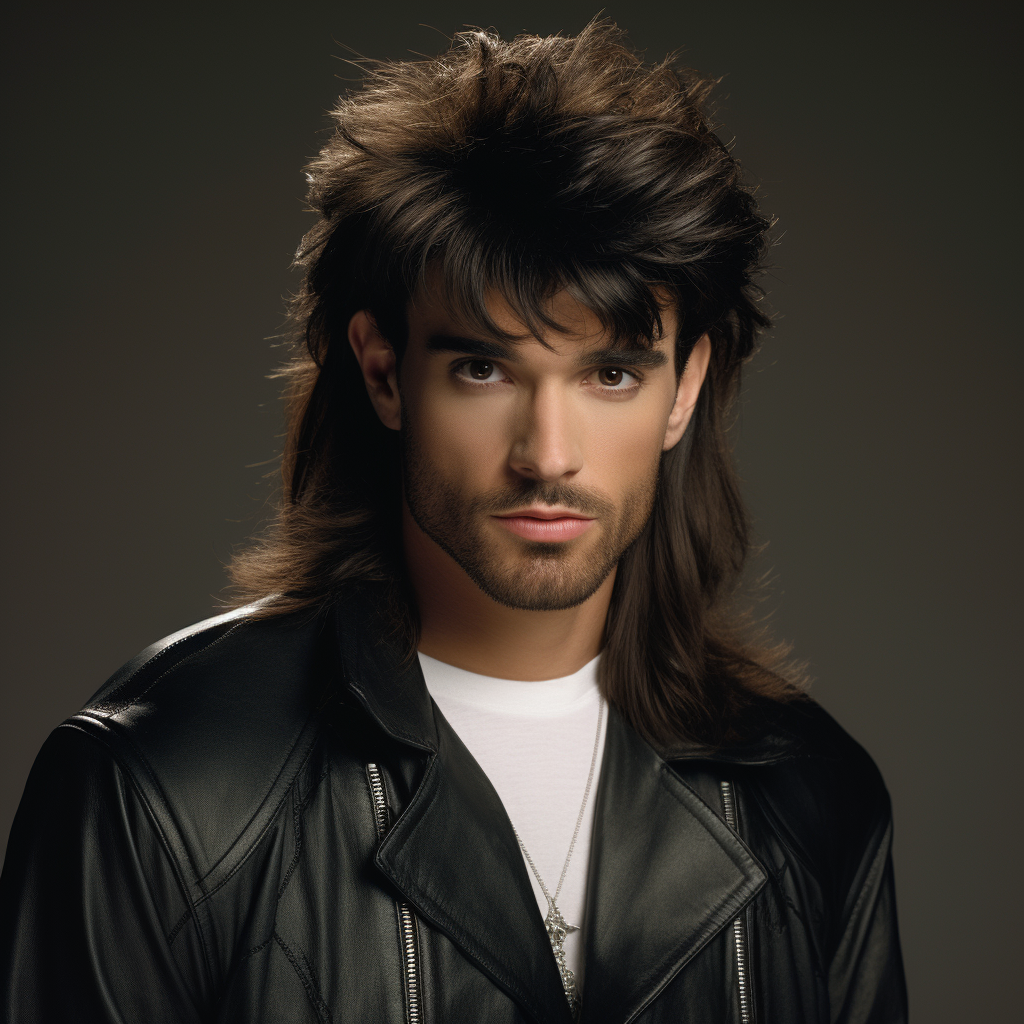
The 1980s brought about flamboyant fashion and over-the-top hairstyles. The mullet, with its business-in-the-front, party-in-the-back approach, became a cultural phenomenon. This distinctive style featured short hair on the front and sides, while leaving the back long and often permed.
1990s: The Curtains

The 1990s saw the rise of grunge and alternative rock, influencing men’s hairstyles accordingly. The curtains, also known as the “middle part” or “shaggy bowl cut,” gained popularity. This style involved growing the hair long and parting it down the middle, framing the face with layered bangs.
2000s: The Spiky Hair
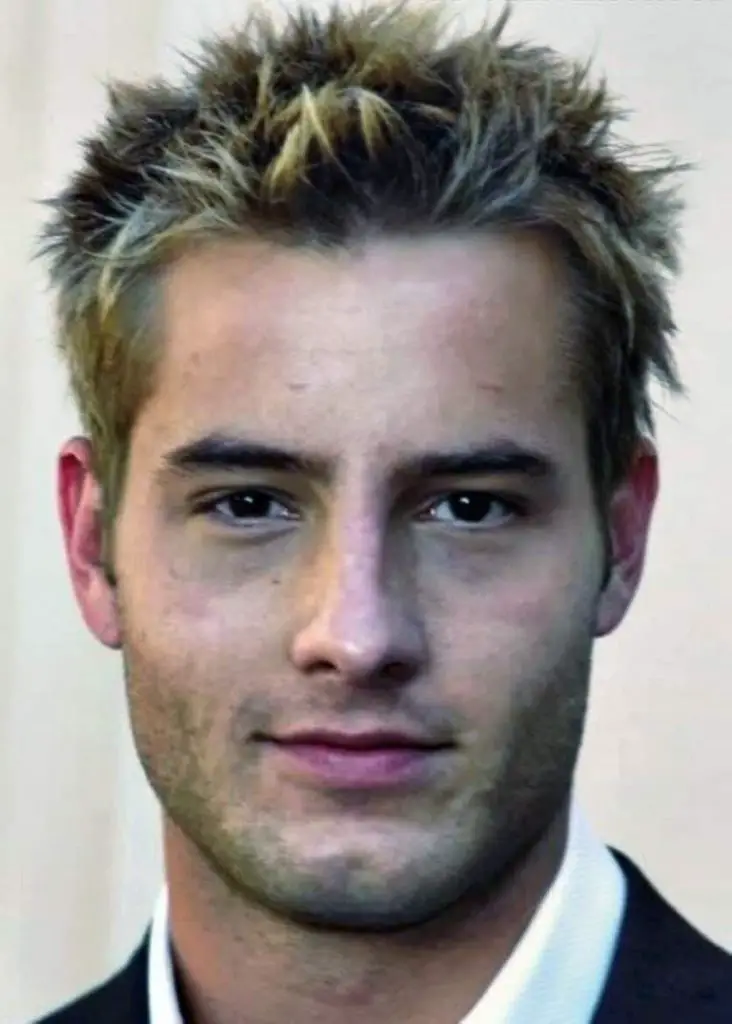
The turn of the millennium brought about a fusion of different styles. Spiky hair became a trend, popularized by celebrities and pop icons. This look involved applying gel or wax to the hair and styling it upwards into sharp spikes.
As we journeyed through the decades, it’s evident that men’s hairstyles have evolved alongside changing societal norms and cultural influences. From the conservative side part of the 1930s to the rebellious pompadour of the 1950s and the flamboyant mullet of the 1980s, each era had its distinct style.
Today, we continue to see a diverse range of hairstyles for men, influenced by both past trends and modern innovations. Whether you prefer a classic side part, a modern fade, or a unique combination of styles, there’s a hairstyle out there to suit every individual’s taste and personality.
Remember, the key to a great hairstyle lies in finding one that not only complements your facial features and hair type but also resonates with your personal style. So, go ahead and experiment with different cuts, colors, and textures to find the perfect hairstyle that makes you feel confident and expresses your individuality.
Male Hairstyles Through the Decades: A Deeper Look Into It
Hairstyles for men have not only mirrored the fashion sensibilities of their times but have also been influenced by socio-political events, iconic figures, and technological advancements. As we explore men’s hairstyles over the years, we uncover a rich tapestry of male expression and identity.
Mens Hairstyles Over the Years: The Early Twentieth Century
1940s Hairstyles for Men: The 1940s were heavily influenced by World War II, leading to practical and low-maintenance hairstyles. The military crew cut became a symbol of solidarity and patriotism. Beyond the crew cut, the decade saw variations like the slicked back look and the flat top, reflecting a mix of military neatness and post-war optimism.
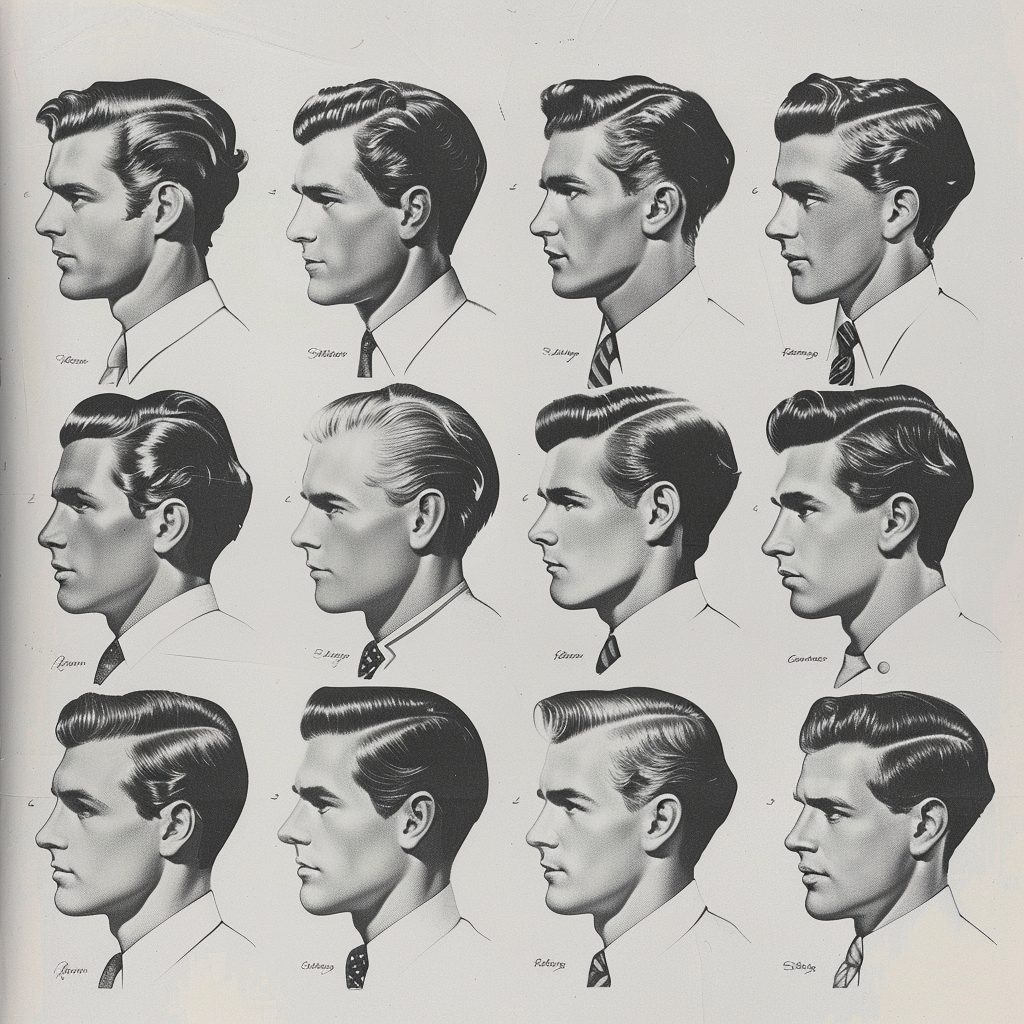
40s Hairstyles Male: Apart from the iconic crew cut, the 1940s also witnessed the popularity of the pomade-slicked style that maintained a clean and polished look, ideal for the post-war return to civilian life. This era laid the groundwork for the diversity of men’s hairstyles, integrating elements of practicality with stylistic flair.
Mens Haircuts Through the Years: Mid to Late Twentieth Century
1960s and 1970s: A Time of Rebellion and Expression: The mod cut of the 1960s and the shag of the 1970s signified a departure from conservative styles, embracing more personal and expressive looks. These decades were marked by cultural shifts towards individualism and rebellion against societal norms, mirrored in the hairstyles adopted by men.
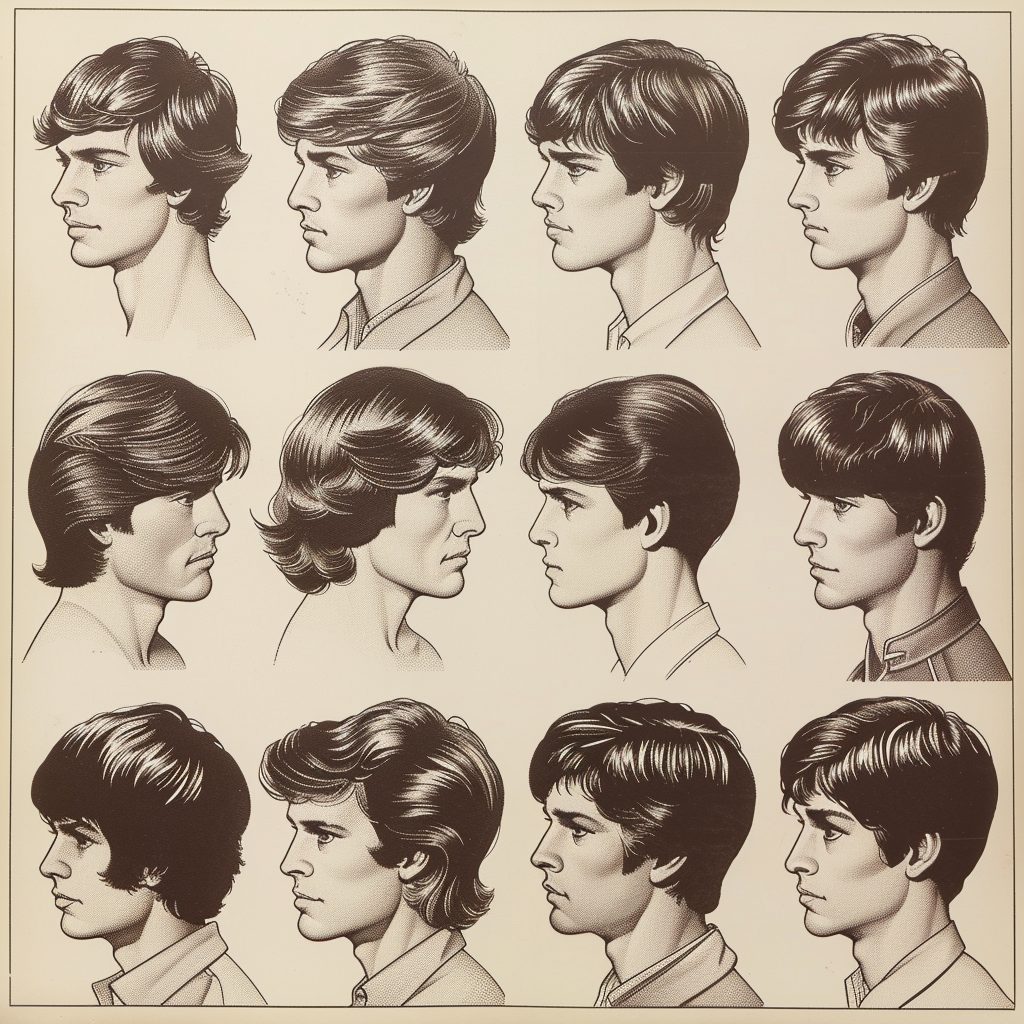
1980s: The Age of Extravagance: The mullet encapsulates the ethos of the 1980s with its distinctive style. This period was characterized by a move towards more flamboyant and voluminous hair, driven by the music and entertainment industry. The mullet, with its long back and short front, became a statement piece, symbolizing the eclectic fashion of the time.
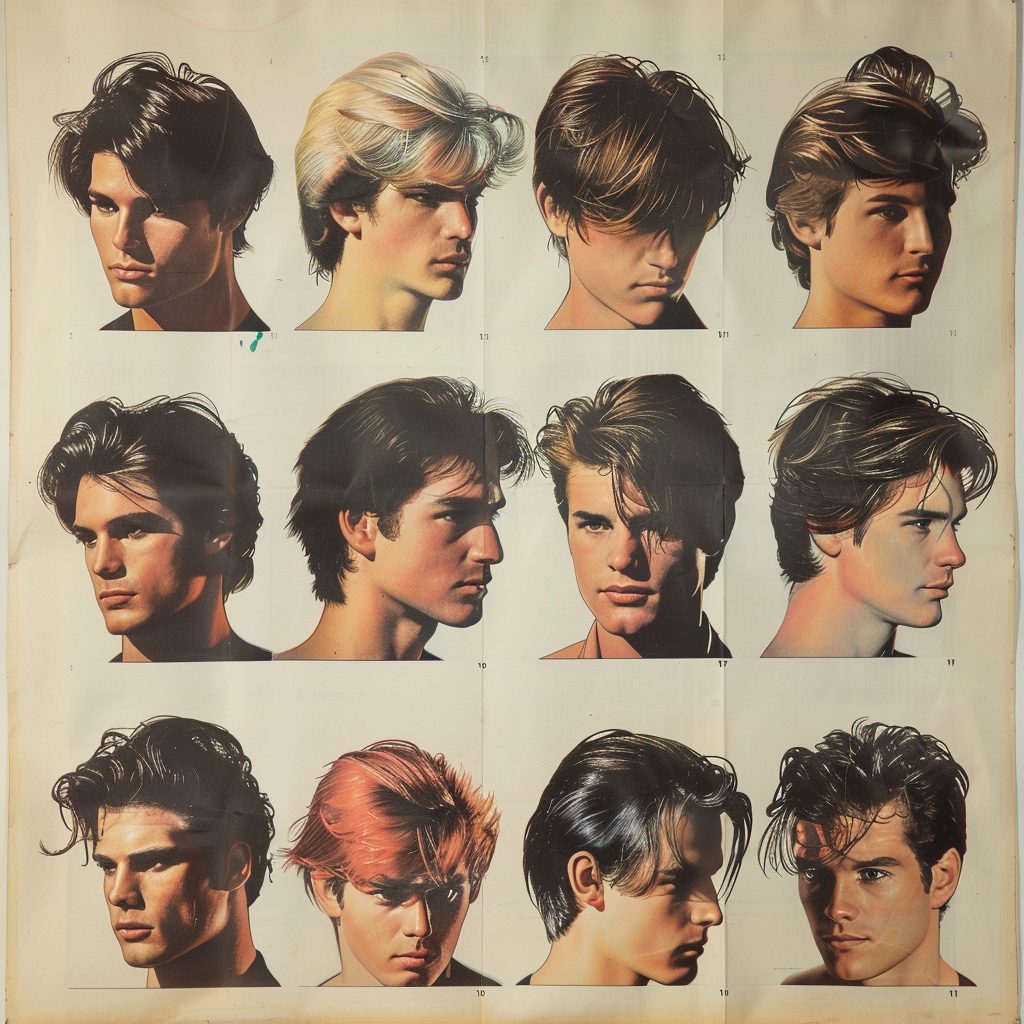
2000s Hairstyles Male: The Turn of the Millennium
2000 Hairstyles Male: As we entered the new millennium, men’s hairstyles became more varied, with a noticeable shift towards textured and spiky hair. The use of hair products to achieve gravity-defying looks became more prevalent, reflecting the era’s penchant for experimentation and individuality.

Every Men’s Hairstyle – The 2000s and Beyond: The early 2000s were a melting pot of previous decades’ styles, ranging from the resurgence of classic cuts to the innovative spiky looks. This era was marked by a willingness to experiment, with men more openly embracing hair color, highlights, and a variety of lengths and textures.
Looking Back to Look Forward
As we’ve journeyed through men’s hair through the decades, it’s clear that each era’s prevailing hairstyles reflect its cultural attitudes and aesthetics. From the slicked-back sophistication of the 1940 mens hairstyles to the bold statements of the 2000s hairstyles male, men’s fashion has continually evolved.
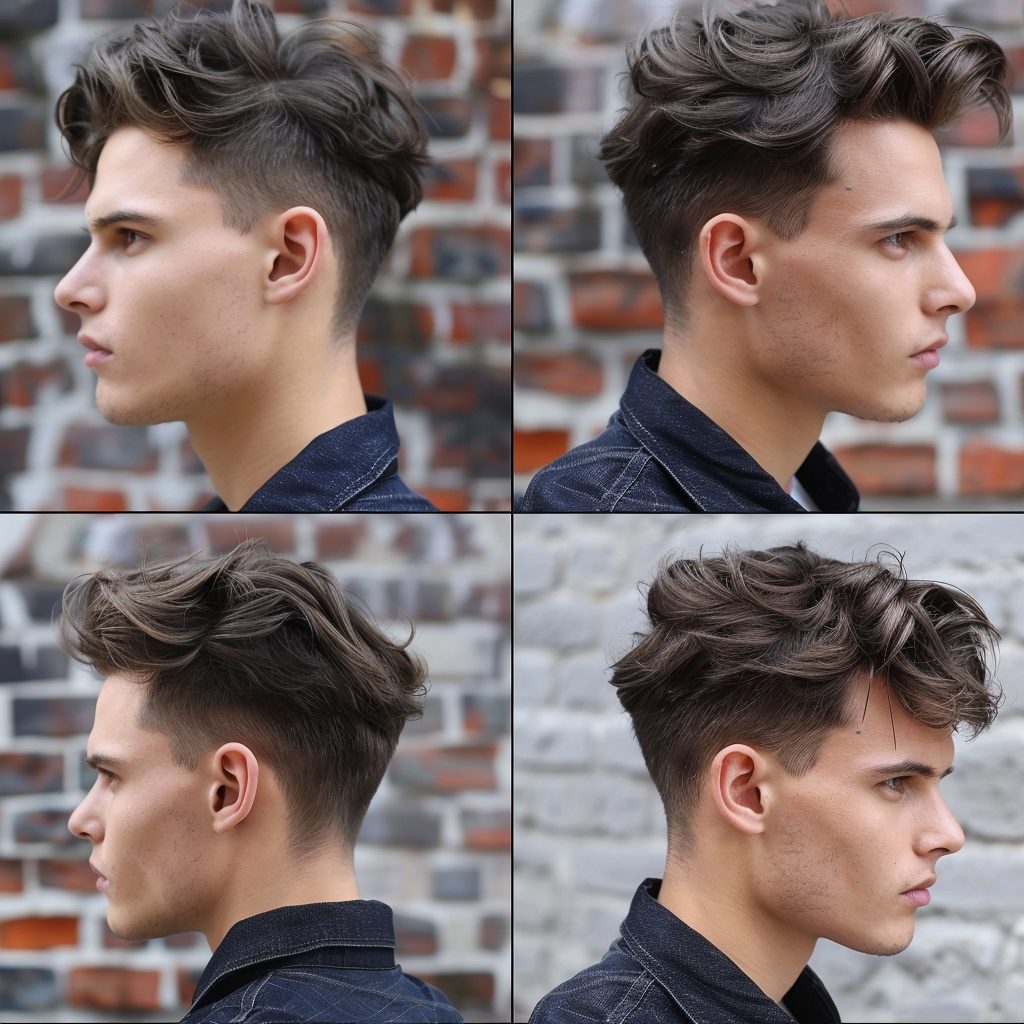
Hairstyles Through the Decades Men: A Reflection of Changing Times
The evolution of men’s hairstyles is a testament to the dynamic nature of male fashion. Each decade brought its distinct flair, influenced by broader societal changes, technological advancements, and iconic figures. As we look to the future, the trends of the past offer a palette of inspiration, encouraging a blend of nostalgia with contemporary innovation.
Men’s hairstyles, from the conservative cuts of the early 20th century to the eclectic styles of the 2000s, narrate the story of male expression through fashion. They reflect the ever-changing landscape of men’s style, shaped by historical events, cultural shifts, and individual creativity. As we continue to see an amalgamation of past trends with modern innovations, the world of men’s hairstyles remains an exciting realm of exploration and expression. Whether you’re drawn to the vintage charm of 1940s hairstyles men or the boldness of 2000 hairstyles male, there’s a rich history to draw from and make your own.
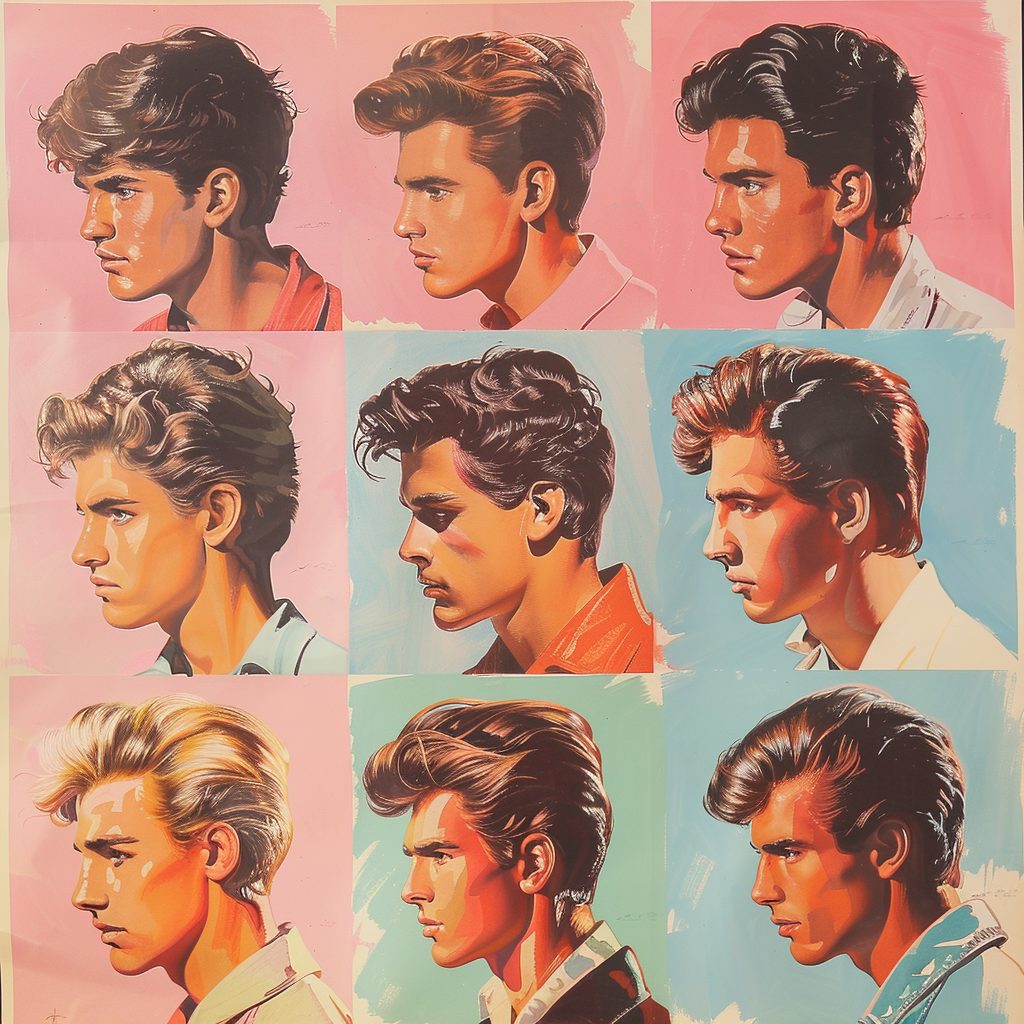
In reflecting upon male hairstyles through the years, it’s evident that the evolution from the 1930s to the present day represents a remarkable journey of transformation and experimentation in men’s fashion. This period can be aptly described as a revolution in male hairstyles, witnessing a fascinating metamorphosis from the conservative and uniform styles of the early 20th century to the eclectic and individualistic expressions of today. The 1930s introduced us to the refined elegance of the classic side part, emblematic of a desire for order and sophistication during tumultuous times. As decades passed, each era brought its own rebellion against the preceding norms, progressively dismantling the rigid boundaries of male grooming.
Men’s Hairstyles Through the Decades
The post-war 1940s and 1950s saw a mix of military-inspired practicality and the flamboyant rebellion of the pompadour, laying the groundwork for the cultural shifts that would follow. The 1960s and 1970s further challenged traditional aesthetics with the mod cut and the shag, hairstyles that embraced youth culture’s burgeoning desire for freedom and self-expression. By the time the 1980s and 1990s rolled around, men’s hairstyles had fully embraced the extremes—from the business-in-the-front, party-in-the-back mullet to the grunge-inspired curtains, showcasing a broadening acceptance of diverse male identities and expressions.
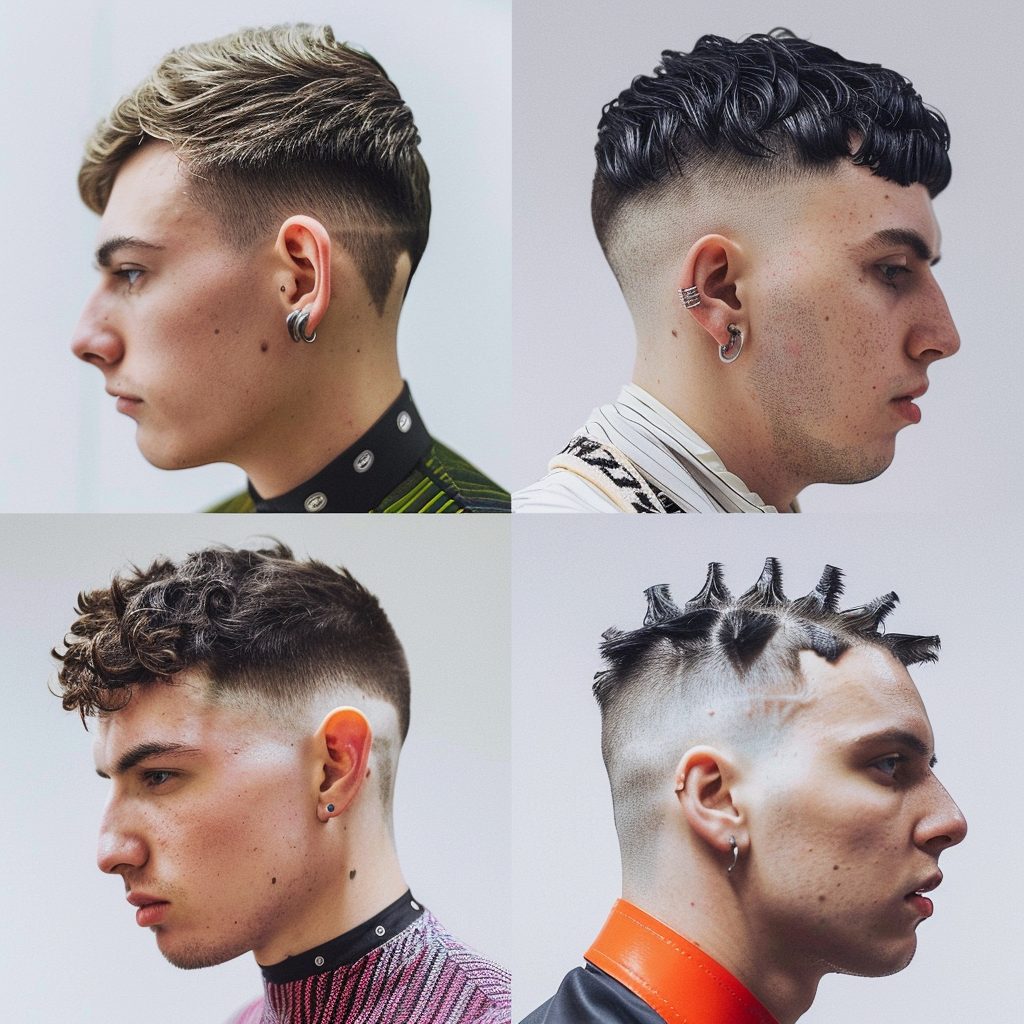
Entering the 2000s, the revolution in male hairstyles became even more pronounced, with a proliferation of styles that borrowed from the past while innovating for the future. This era and beyond have been characterized by a fearless approach to hairstyling. Where traditional gender norms are continuously challenged, and personal expression is celebrated. Today, we see a vibrant landscape of modern male hairstyles, from the resurgence of vintage classics to the advent of bold, contemporary cuts. This diversity reflects a broader cultural shift towards inclusivity and individuality. Each man’s choice of hairstyle is a personal statement, unbound by the conventions of previous generations.
The ongoing evolution of mens hairstyles over the years illustrates not just changes in fashion, but a deeper narrative of societal evolution, technological advancements, and shifting perceptions of masculinity. As we look back on the male hairstyles revolution, it’s clear that the journey of male self-expression through hair is far from complete. With each passing decade, men continue to explore new frontiers of style, driven by a relentless pursuit of individuality and a rejection of one-size-fits-all beauty standards. The tapestry of male hairstyles today is rich and varied, a testament to the dynamic and ever-changing nature of male identity and expression in the modern world.